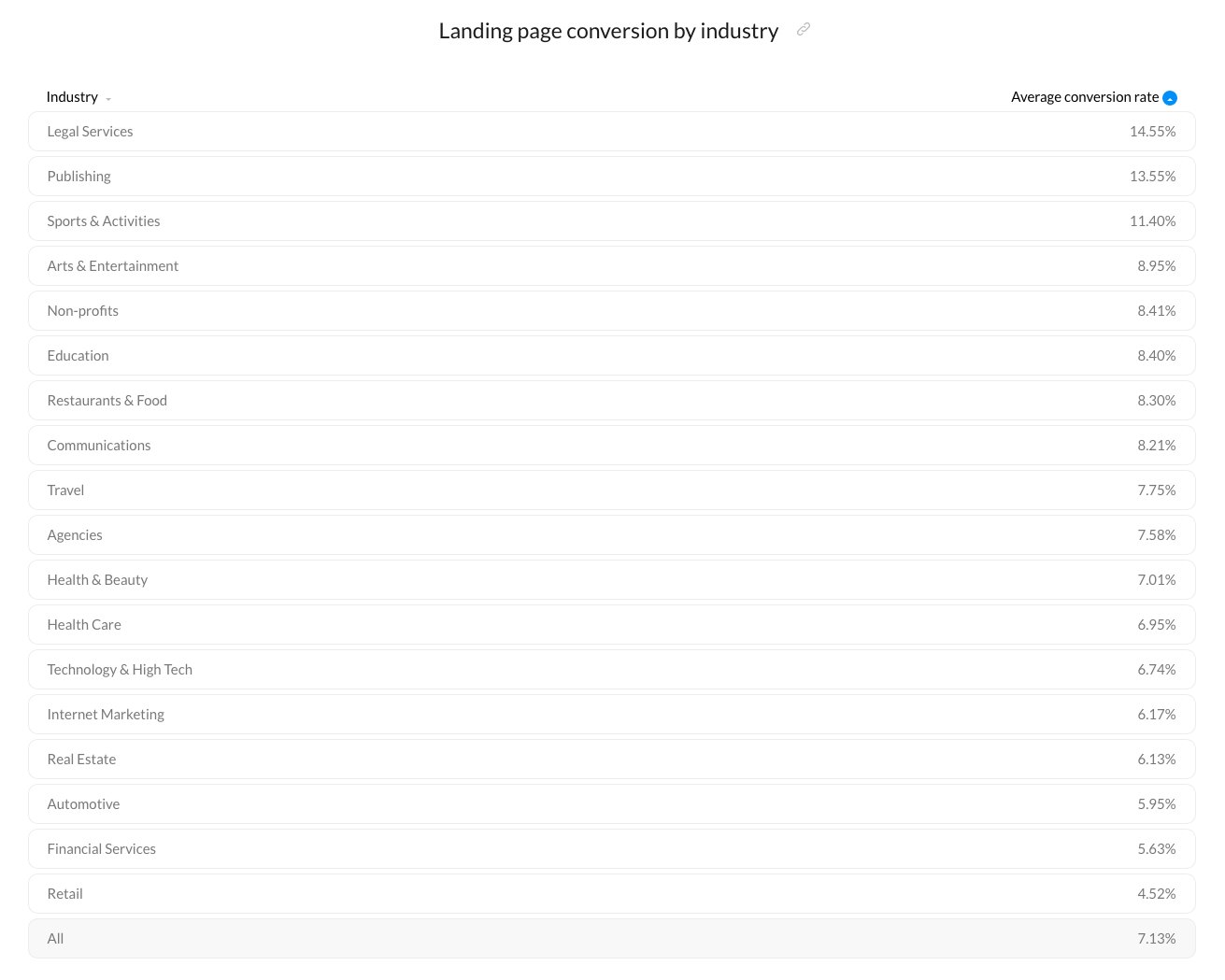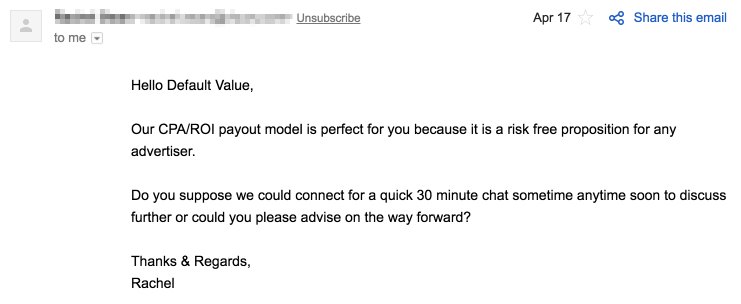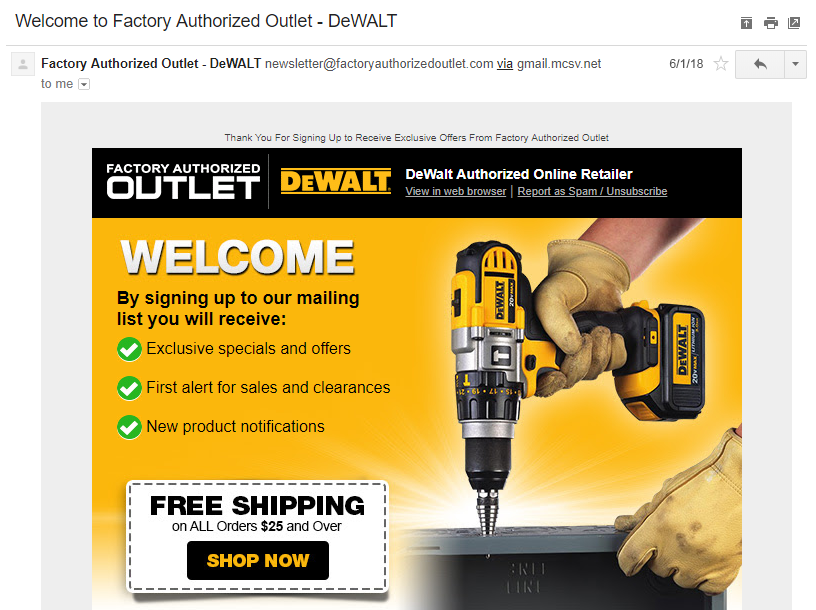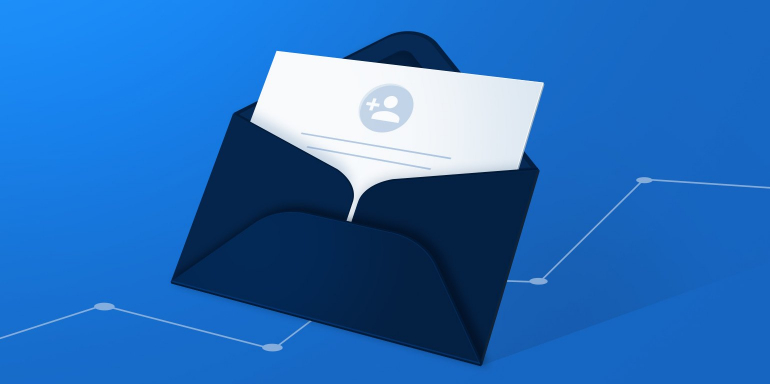Most advertisers make email marketing a top priority, simply because it’s the king of all marketing strategies, generating a higher ROI than other digital advertising channels. And yet, many marketers find themselves wondering why they see good open rates, but not generating many leads. That’s because the return only happens if your email campaign can convince recipients to complete your desired action. Meaning, your campaign must not only have a good open rate but a good email conversion rate as well.
What does email conversion rate mean?
Email conversion rate, or email marketing conversion rate, is defined as: the percentage of subscribers who complete a goal action. Of course, that action depends on your specific conversion goal. In many instances, the conversion goal is purchase-related (becoming a customer), while other times it’s not (simply becoming a lead).
How to calculate your email conversion rate
To compute your email campaign conversion rate, divide the number of people who completed your desired action (signups, purchases, etc.) by the total number of successful deliveries. Then multiply that number by 100.
The email conversion rate formula looks like this:

What is a good conversion rate for email marketing?
Unfortunately, there’s no real answer to that question, other than: a better one than you have now.
Ever heard the saying, “The only one you should compete with is yourself”? As cliche as it sounds, it’s true. The only way to achieve “good” email campaign conversion rates is to take a closer look at your data to see where you’re falling short, and then aim to boost your conversion rate with various optimization techniques.
Of course, there are average email conversion rates and industry benchmarks that you can compare your results (see next section). But the problem with those statistics is that many details play a role that may not be taken into account. Therefore, the only good conversion rate is simply one that’s higher than your current one.
Average conversion rate for email campaigns
Average email conversion rates vary depending on several factors, such as industry, geographical location, company size, email type, and more.
Here is a list of industry-based average conversion rates collected by GetResponse:

The data shows that legal services, publishing, and sports & activities have the highest average email conversion rates; while retail, financial services, and automotive have the lowest rates. Keep in mind, that it’s difficult to make any accurate comparisons here because of other contributing factors, such as the type of email sent and the company’s specific conversion goal.
Conversely, this chart shows average conversion rates based solely on the email type sent:

In this instance, although other factors are unknown (like industry, location, conversion goal, etc.), newsletter emails tend to have the lowest average conversion rate, while order follow-up emails and abandoned cart emails produce the highest average conversion rates.
5 ways to achieve higher email conversion rates
1. Craft a compelling email subject line
Without a compelling subject line, you can forget about having any positive results because if your email is not opened, the recipient won’t see your message and be intrigued to click-through. Short and descriptive subject lines often do well, as do these click-worthy subject line formulas:
Asking questions that pique interest and drive curiosity
![]()
Using urgency and scarcity that plays on the fear of missing out
![]()
Including numbers (prices, discounts, statistics, etc.)
![]()
Using personalization, with the recipient’s name, local information, etc.
![]()
Subject lines are just the beginning and only a small portion of getting a good email conversion rate. Personalization within the email — inserting name tokens to address the recipient — can also be beneficial. Here is an example when failing to insert the name token goes wrong:

Perhaps you’d feel differently, but being referred to as “Default Value” and then being told that this CPA/ROI payout model is perfect for me — wasn’t very believable, and certainly didn’t make me want to connect with Rachel or click-through the email.
When you neglect details like this, can you expect the person to take action and convert on your offer?
2. Segment your email list to the appropriate persona
Grouping your recipients by demographics, psychographics, purchase history, browsing activity, etc. makes it possible to tailor your emails to specific groups. This increases the relevance and quality of your email lists, which has a positive effect on both open rates and conversion rates. In fact, one study showed that segmenting email lists and campaigns can generate as much as 760% increase in email revenue.
Segmentation and relevance can also help retain email subscribers and keep them engaged over the long-term.
3. Send content that matches their stage in the funnel
96% of organizations believe that email personalization improves overall email marketing performance. Segmentation helps with targeting, along with matching the content to the recipient’s specific customer journey stage so they are more likely to read through and convert.
Acknowledging the customer journey allows you to send campaigns to your customers and prospects based on pre-defined triggers, including:
- The time since the person subscribed to your email list
- Past open and click-through rates
- Previous purchases or conversions
- The average order value
Use these triggers to first identify the best timing and message for your audience, and then select the right type of email to send. Common messages include:
- Welcome emails, after someone signs up for your email list, an account, etc.
- Abandonment cart emails, after someone leaves an item in their cart without completing their purchase
- Post-purchase emails, after a customer completes their purchase
- Re-engagement emails, after a customer has left your site and hasn’t revisited in a while
This DeWALT welcome email was sent to me after signing up for their mailing list:

It is welcoming, acknowledges that I signed up for the list, what benefits I can expect, and offers a free shipping coupon. Clicking the coupon sent me to the homepage to start shopping and apply the coupon. Doing so helps increase the click-through rate of the email and likely the conversion rate (purchase), too.
4. Ensure a responsive design
A recent study by Return Path analyzed more than 27 billion email opens between May 2016 and April 2017. They found more than 55% of emails are opened on a mobile device, and that number increases to 60% on weekends.
Pair those results with the fact that 70% of email recipients will delete an email immediately if it’s not mobile friendly — and it’s easy to see how mobile responsiveness can significantly impact conversion rates.
To achieve superior mobile optimization and responsiveness, follow these best practices:
- Create a short subject line (30-35 characters) so it can be properly displayed on mobile phones
- Use a single column layout
- Keep copy minimal and concise, and break it up into small chunks surrounded by white space so readers can easily skim
- Use larger fonts to improve readability
- Create bulletproof CTA buttons to show up perfectly across all inboxes
- Reduce image size to speed up mobile load time
Furthermore, be sure to run A/B tests to figure out which elements work as intended and which ones don’t. Continuing to run tests to evaluate the changes you implement will help you improve email conversion rates over time.
5. Direct recipients to a dedicated post-click landing page to take action
One of the most essential components of a high-converting email campaign is directing recipients to a post-click landing page or sales page to take the desired action. This means every one of your emails needs an optimized, relevant CTA button to get them there.
It’s also just as important to design your post-click landing page for conversion rate optimization. A lot of this has to do with message matching the email to the post-click landing page, since this is one way to guarantee higher conversion rates.
Message matching can occur through headlines, copy, images, and more. Any consistent, matching elements that convey relevance, and let visitors know that they’re in the right place for the offer when they clicked the email CTA.
For example, if you promise recipients free pizza every day for a year, you’re likely to have a high open and click-through rate. However, if they get to your post-click landing page and find out that you only sell dog chew toys, your bounce rate will also be sky high. That’s why post-click landing page optimization is such a huge part of the post-click landing page.
Optimize the post-click landing page
Many components play a role in earning consistently high email marketing conversion rates. Subject lines, segmentation, relevant content, and mobile responsiveness are all pre-click components. What happens post-click closes the deal — it is where the conversion happens.
No matter your goal, be sure to create an optimal user experience, sign up for an Instapage Enterprise demo today.

See the Instapage Enterprise Plan in Action.
Demo includes AdMap™, Personalization, AMP,
Global Blocks, heatmaps & more.
